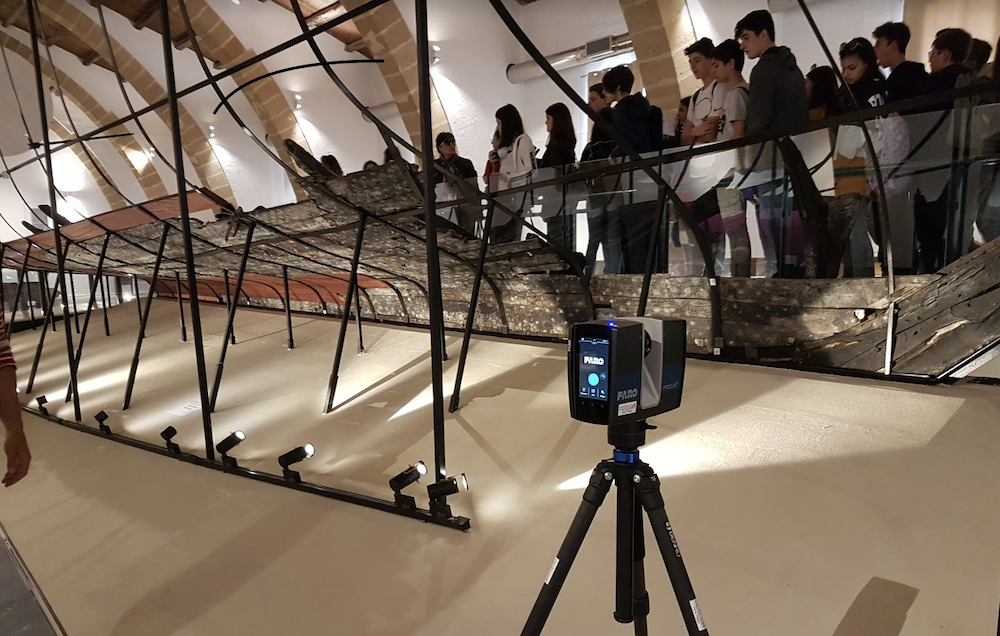3D Documentation of the Marsala Punic Ship: Digital Conservation and Archiving - 2020
Mateusz Polakowski and Pat Tanner
Introduction
The Marsala ship is one of the few examples of Punic ships surviving in the archaeological record and serves as the best example of Punic ship construction. The Punic ship, dated using pottery found on the wreck site to the 3rd century BC, is one of the only excavated shipwrecks that provides information on building techniques used by Punic shipbuilders at that time (Figure 1) (Johnstone:1977, 1978, 1983). It is housed at the Regional Archaeological Museum Baglio Anselmi in Marsala, Sicily which has in 2019 been reorganized under the new Parco Archaeolgico Lilbeo-Marsala. Following a reexamination of archival data by the Trinacria Sounding Project (TSP) (Berlinghieri and Calcagno 2013) and a new effort in 2018 to reexamine the ship’s conservation by a team of nautical archaeologists and conservators from the Arc- Nucléart restoration laboratory and the Centre Camille Jullian (Aix Marseille University, CNRS), the Marsala Punic Ship was found to be requiring some conservation work.
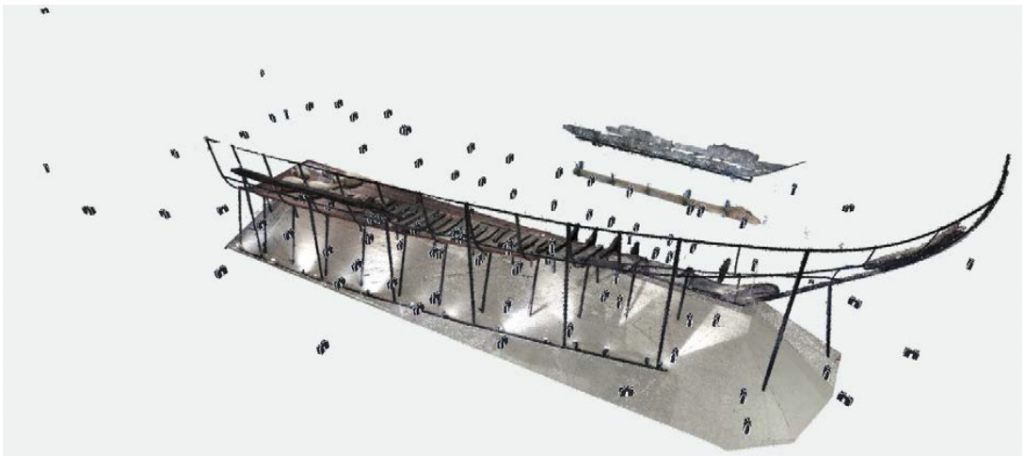
Project Aims
This project documented the Marsala Punic ship with a high-resolution three-dimensional scan using the Faro Focus5 (S-series). The primary goals of this project were to produce a high-resolution archive of the Marsala Punic Ship and its associated remains to inform conservators and archaeologists about the ship’s current integrity and future conservation efforts. The project goals were to achieve:
1. A digital survey by 3D laser scanning coupled with improved photogrammetric survey and the topographic survey of permanent target network within the building.
2. A digital survey of the timbers not on display in the museum such as keel models and stanchion support(s).
3. A laser scan of the original plaster casts taken by Honor Frost of the timbers during initial excavation (currently housed at the Cantine Pellegrino, Marsala).
4. Process a high accuracy three-dimensional model of the archaeological remains
5. Produce a first stress-model of the archaeological remains and examine it against historical datasets to determine the percentage of deformity and degradation.
6. Use this preliminary dataset to aid in conservation efforts to stabilize the shipwreck.
The digital documentation of the ship in its current display will help to formulate a conservation strategy and document the ship before any intervention begins. The resulting models will allow archaeologists and conservators to interact with objects without causing further damage.
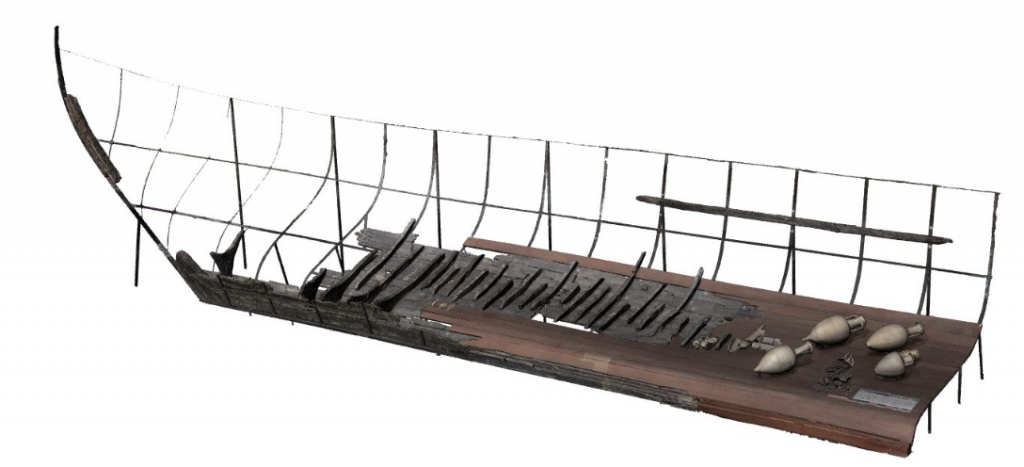
Background
In 1970 Honor Frost (1972, 1973, 1974a, 1981a; Basch 1974) gathered an international team of archaeologists, engineers, and divers to excavate two ancient wooden ships near Marsala, off the western coast of Sicily. Between 1971 and 1974 the Marsala Punic Ship and the Sister Ship were excavated. The Punic ship was raised and eventually put on display in the Regional Archaeological Museum Lilibeo in Marsala. The Sister Ship was recorded by Frost’s team but was reburied and left on the seafloor (Frost 1974b, 1975).

2018-2019 Survey
In early April 2018, a team from the Arc-Nucléart, the Center Camille Julian (Aix Marseille University), and the University of Southampton composed of maritime archaeologists, conservators, and photographers spent four days conducting an initial survey of the Punic ship. This team collected samples of timber from various parts of the ship to test for levels of degradation and conducted a photogrammetry survey of the ship. The team concluded that the remains have undergone heavy remodeling due to the use of modern screws, plates, and rods to support the wooden structure. The assessment also noted that the current support structure of iron bands was providing insufficient support to the timbers causing them to deform and warp.
This initial survey prompted the proposal of creating a high accuracy 3D digital model of the ship. In 2019 Pat Tanner and Mateusz Polakowski (University of Southampton) joined the project team to conduct a three-dimensional digital survey of the Marsala Punic Ship.
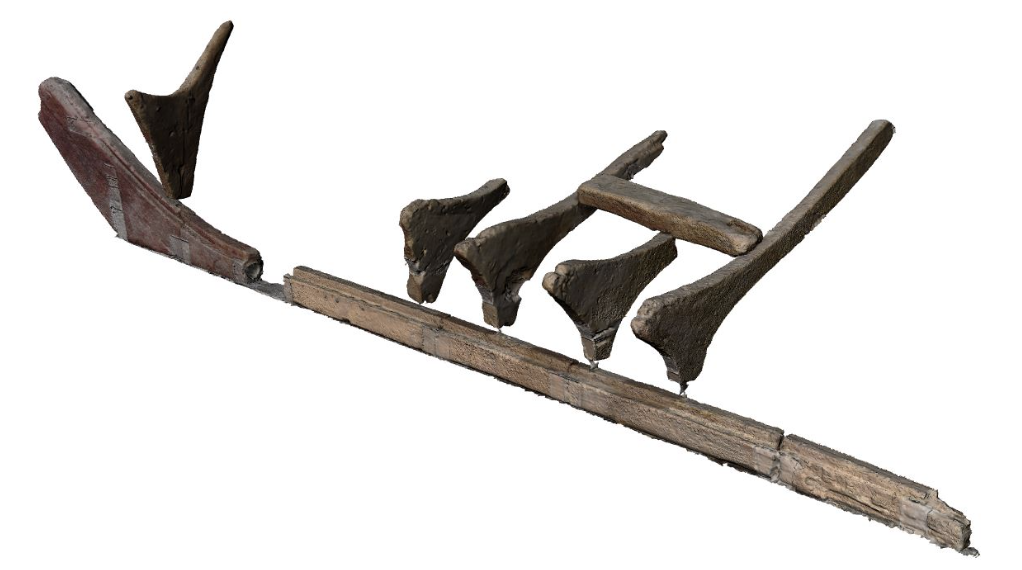
Methodology
From 24th April to 1st May 2019 the Marsala Punic ship and associated artefacts were recorded using a combination of 3D laser scanning and photogrammetry by the combined project team. Access was granted to scan associated timbers and ship elements not on current display in the museum as well as the original plaster moulds taken by Frost and her team during the ship’s excavation.
A total of 98 individual laser scans were recorded for the vessel remains, as well as over 3,500 digital photographs. The 98 individual laser scans (Figure 1) recorded with a Faro Focus S70 scanner were registered into a unified project point cloud with an accuracy of 2.4 mm using Faro scene software.
The laser scan point cloud was imported into Reality Capture software and combined with the digital photographs in order to supplement the scan data with photogrammetry data. This had the result of generating a super high-resolution 3D polygon mesh model of the vessel consisting of 261 million triangles and textured using more than 2,500 high resolution photographs.
This mesh file would be too large to work with and is decimated in order to reduce file size. The decimated high-resolution mesh was then exported to Rhino for further analysis (Figure 2 and Figure 3).
The same process was also used to record the keel and frame moulds housed in the Cantine Pelligrino (Figure 4), as well as the museum model of the keel (Figure 5), the disarticulated starboard side planking (Figure 6) and the replica stem section from the so-called ‘Sister Ship’ (Figure 7).
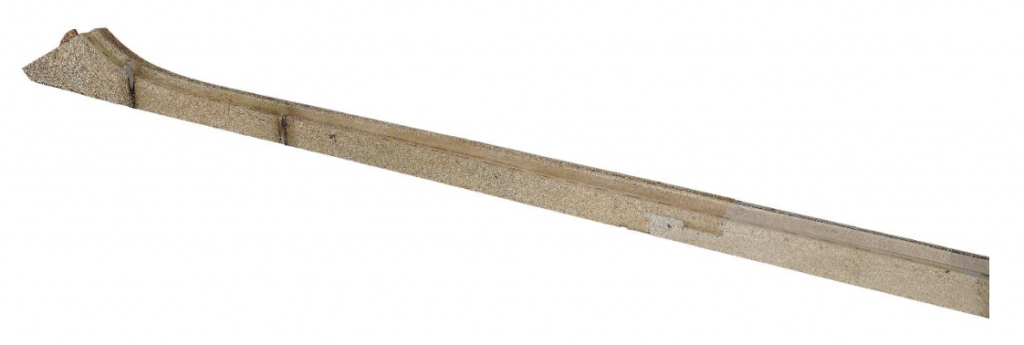
Combining the digital data
With each of the documented components rendered as a 3D mesh model at full scale, each model was imported into a master Rhino file and correctly orientated and aligned to each other (Figure 11), allowing for the first time a three-dimensional digital reassembly of all the available constituent components of the Marsala Punic Ship.

Conclusion
The 2019 project successfully completed high resolution digital records of the Marsala Punic Ship, its cradle, the surrounding building, its associated timbers (not on display), and the original moulds taken during the ship’s excavation. The high accuracy three-dimensional laser scans were successfully aligned with the photogrammetry created by the CCJ team using a common datum. The resulting models provided quantifiable levels of distortion and indicated stress points in the current display cradle. While the plaster moulds taken by Frost’s team during excavation were scanned, modelled, and aligned they were ultimately unable to provide a cloud comparison to help determine the ship’s degradation. The digital reconstructions can also be developed through a virtual reality engine to create immersive models that would allow visitors to take virtual tours of the ship. A preliminary virtual tour of the ship is currently in development and available to view and share to the public. These models can assist as a capacity building tool for the museum’s educational outreach and public engagement programs.
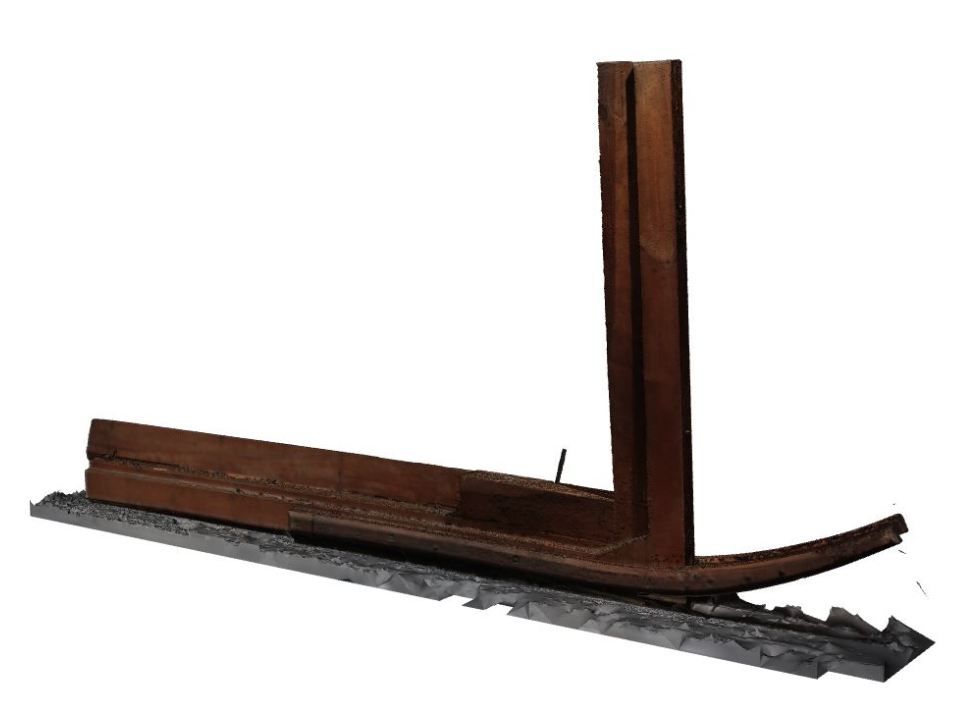
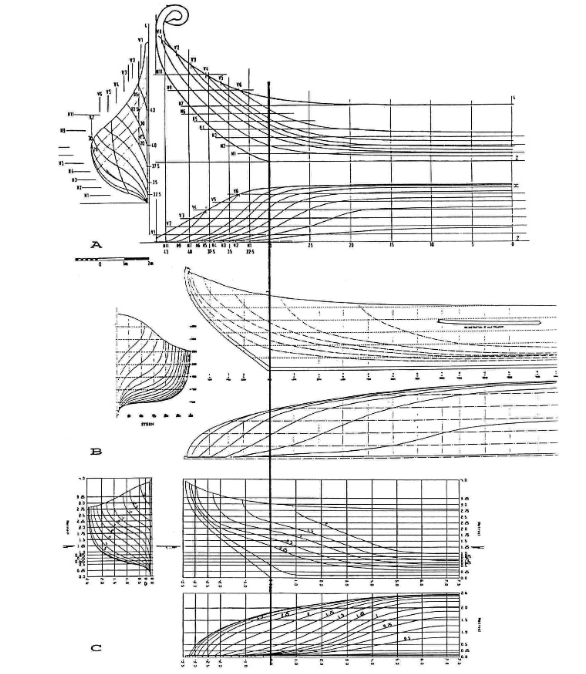
Project Website(s)
VR Exhibit – https://www.thinglink.com/video/1258758888233107457
Traditional Boats of Ireland SketchFab
• Marsala Punic Ship: https://skfb.ly/6KIqB
• Marsala Punic Ship Cantine Pelligrino Moulds: https://skfb.ly/6Ktp6
Team Members
Principal Investigators
Dr. Giulia Boetto (AMU/CNRS/CCJ)
Mateusz Polakowski (University of Southampton)
Ship Science and Laser Scanning
Dr. Pierre Poveda (AMU/CNRS/CCJ)
Pat Tanner (3D Scanning Ireland Ltd/University of Southampton)
Photogrammetry and Spatial Reference
Lionel Roux (AMU/CNRS/CCJ) Vincent Dumas (AMU/CNRS/CCJ)
